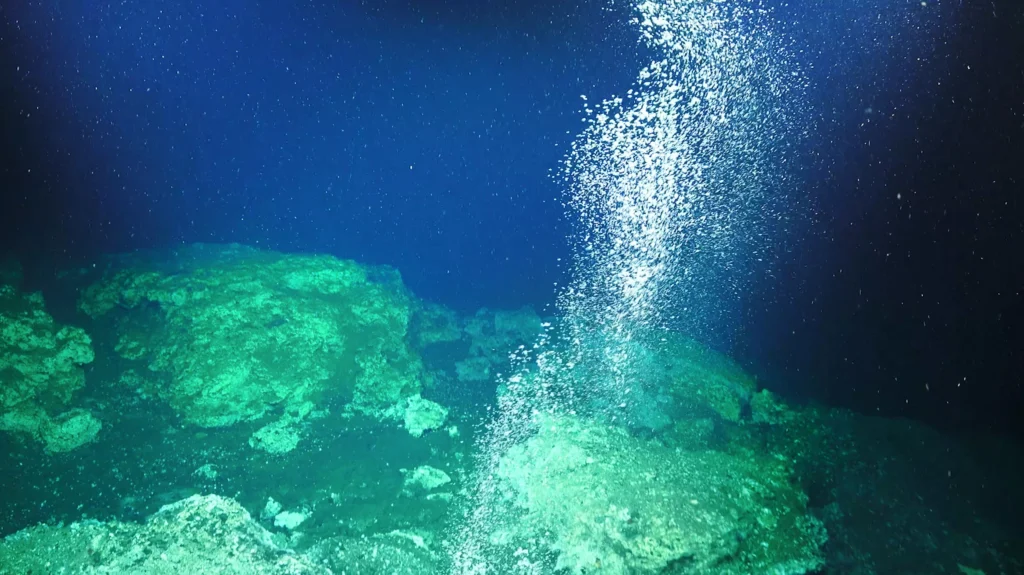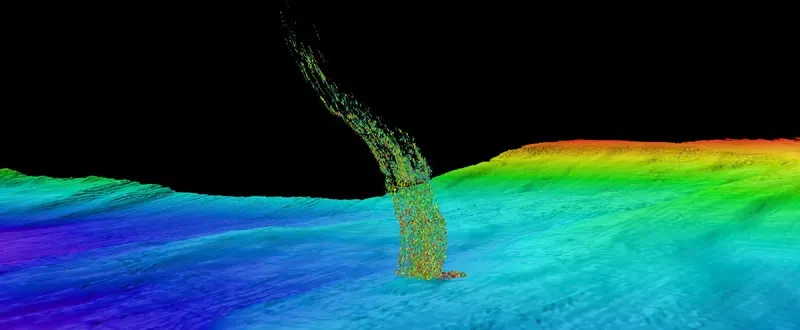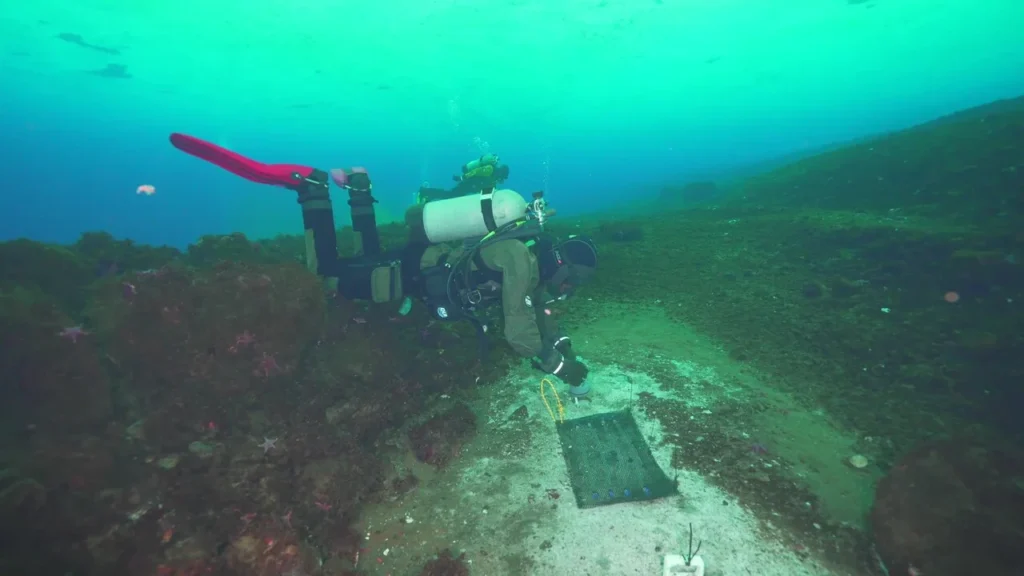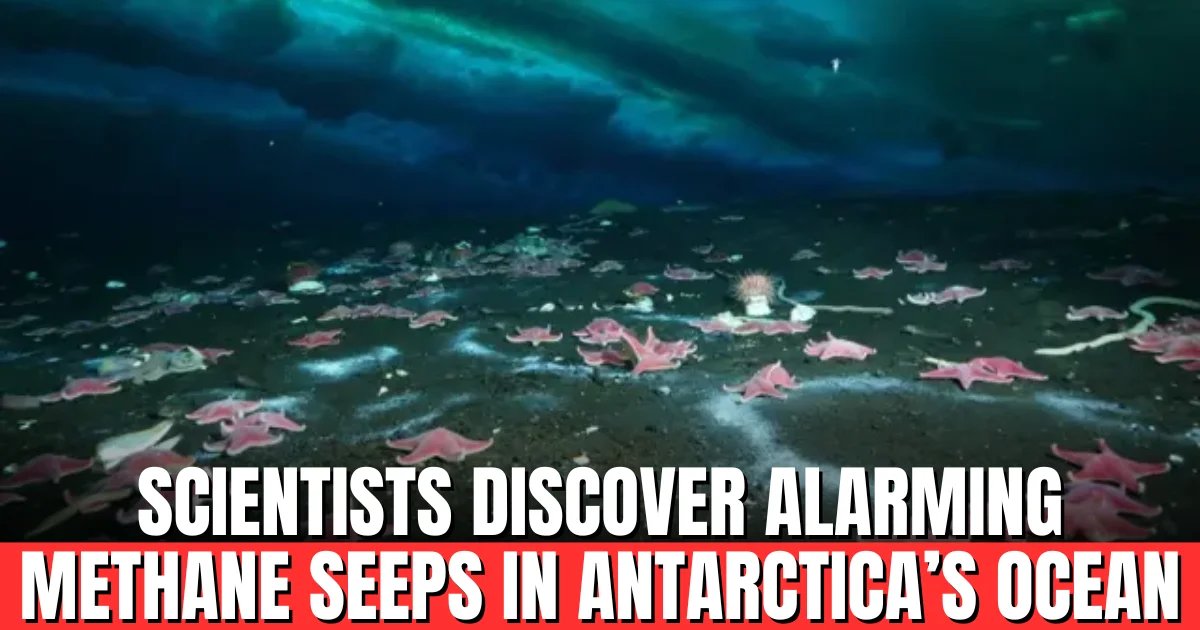Scientists find rapid methane release beneath Antarctica’s ocean, raising global warming fears. Learn the shocking details now!
Table of Contents
Scientists Discover Alarming Methane Seeps in Antarctica’s Ocean
Planet-heating methane is escaping from cracks beneath Antarctica’s seabed at a pace that has surprised scientists. Recent research reveals that these methane seeps are forming at an “astonishing rate,” raising concerns that current climate change models may underestimate the impact of this potent greenhouse gas.
With methane trapping approximately 80 times more heat than carbon dioxide in its first 20 years, understanding these seeps is critical to predicting our planet’s warming trajectory.
What Are Methane Seeps?

Methane seeps are natural fissures in the seabed where methane gas escapes from reservoirs formed over millennia. Key points include:
- Methane rises as bubbles from the ocean floor.
- Some of it is consumed by methane-eating microbes, while some reaches the atmosphere.
- They are a significant climate concern due to methane’s heat-trapping potential.
Globally, methane seeps are relatively common, but Antarctica has been an exception—until now.
Antarctica’s Hidden Methane Threat
Scientists focused on the Ross Sea in Antarctica, exploring depths from 16 to 790 feet using:
- Ship-based acoustic surveys
- Remotely operated vehicles (ROVs)
- Diver-collected samples
Findings:
- Over 40 methane seeps were identified in shallow waters.
- Many seeps appeared in locations previously studied, suggesting new seeps are forming rapidly.
- This may represent a fundamental shift in Antarctic methane release patterns.
Sarah Seabrook, marine scientist at Earth Sciences New Zealand, emphasized:
“Something that was thought to be rare is now seemingly becoming widespread.”
Why Scientists Are Concerned

The rapid increase in methane seeps raises several issues:
- Climate Feedback Loop
- Methane seeps may accelerate global warming.
- Warmer oceans could trigger more methane release, which in turn worsens climate change.
- Marine Ecosystem Impact
- Altered ocean chemistry could affect marine life.
- Methane bubbles may disrupt habitats near the seabed.
- Unpredictable Environmental Risk
- The gas can transfer quickly into the atmosphere, creating a planet-heating pollution source not currently factored into climate models.
How This Compares Globally
Similar methane releases in the Arctic have been linked to:
- Rising ocean temperatures
- Sea level changes
- Land uplift after glacial melting
The Antarctic methane seeps, with their vast reservoirs, could become a global hotspot for climate impact if human activity continues warming the planet.
Scientific Exploration Continues

Researchers are returning to Antarctica for further investigation, focusing on:
- Measuring methane concentration and seep activity
- Understanding how microbial communities consume methane
- Predicting the rate at which methane may reach the atmosphere
Andrew Thurber, marine biology professor at UCSB, warns:
“Methane levels in the atmosphere are rising, and scientists are still trying to understand the exact reasons behind it.”
These ongoing studies aim to determine whether these seeps are a natural phenomenon or significantly influenced by climate change.
Potential Global Implications
- Methane seeps could alter global climate projections.
- Feedback loops may make current warming models too conservative.
- Understanding these seeps is vital for policy planning and climate mitigation strategies.
FAQs
Q1: What are methane seeps?
A1: Methane seeps are cracks in the seabed that release methane gas from deep reservoirs into the ocean, some of which reaches the atmosphere.
Q2: Why are Antarctic methane seeps alarming?
A2: Methane is a super-potent greenhouse gas, trapping 80 times more heat than CO₂ over 20 years, potentially accelerating climate change.
Q3: How do scientists study these seeps?
A3: Using acoustic surveys, remotely operated vehicles (ROVs), and divers to collect samples and measure methane levels.
Q4: Could these seeps affect marine life?
A4: Yes, methane bubbles can alter seabed ecosystems, impacting organisms and disrupting habitats.
Q5: What is the potential global impact?
A5: Rapid methane release may create a feedback loop, intensifying global warming and altering climate projections.
Conclusion
The discovery of multiple methane seeps beneath Antarctica’s oceans is a wake-up call for climate scientists and policymakers. These seeps, previously considered rare, are appearing at an unprecedented rate, signaling that current climate models may underestimate future warming.
As researchers continue to investigate, the global community must stay informed and proactive in climate mitigation efforts.
